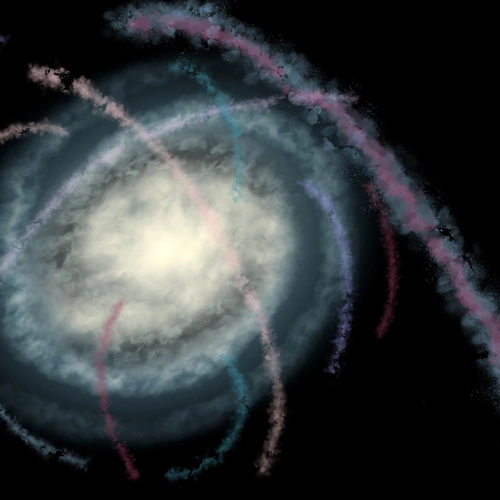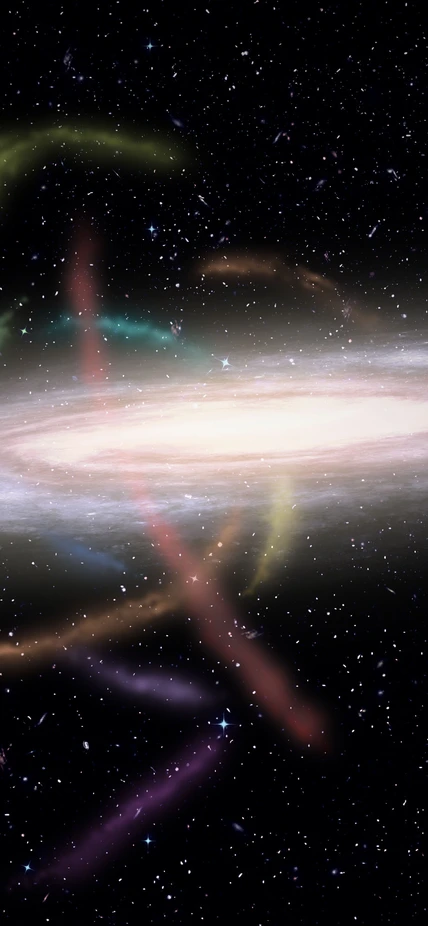Pasadena CA—A new map of a dozen associations of moving stars—called stellar streams—orbiting within the Milky Way’s halo has brought astronomers one step closer to revealing the properties of the dark matter enveloping our galaxy and shaping the universe. Accepted for publication in The Astrophysical Journal, the map was produced by an international collaboration of astronomers, including several current and former Carnegie scientists.
“Stellar streams are the shredded remains of neighboring small galaxies and star clusters that are torn apart by the Milky Way,” explained Carnegie’s Josh Simon, a co-author on the paper. “These remnants continue to move together in long, arcing threads, orbiting around our galaxy.”
Studying stellar streams can reveal information about the dark matter that holds the stars in their orbits. Additionally, they can reveal information about the Milky Way’s formation history, showing how it has steadily grown over billions of years by shredding and consuming smaller stellar systems.
“We are seeing these streams being disrupted by the Milky Way’s gravitational pull, and eventually becoming part of the Milky Way,” said University of Toronto’s Ting Li, the lead author, who initiated this work when she was a postdoctoral fellow at Carnegie. “This study gives us a snapshot of the Milky Way’s feeding habits, such as what kinds of smaller stellar systems it ‘eats.’ As our galaxy is getting older, it is getting fatter.”
Li and her international collaborators initiated a dedicated program—the Southern Stellar Stream Spectroscopic Survey (S5)—to measure the properties of stellar streams.

She and her team are the first group of scientists to study such a rich collection of stellar streams. Working on the 4-meter Anglo-Australian Telescope in Australia, they measured the speeds of stars by using the Doppler shift of light—the same phenomenon harnessed by radar guns to capture speeding drivers—to find out how fast individual stars were moving.
Unlike previous studies that have focused on one stream at a time, the S5 team was dedicated to measuring as many streams as possible. Observations of the Milky Way made by the European Space Agency's Gaia satellite were crucial to the project’s success, aiding the team in identifying stream members.
When studied as a group, the properties of these stellar streams reveal the presence of the invisible dark matter of the Milky Way in the same way that twinkle lights can reveal the shape of a tree that they are strung up around, even when we can’t see the branches or foliage.
In addition to their speeds, astronomers are interested in the chemical compositions of the stars in stellar streams, which can reveal where they were born.
"Stellar streams can come either from disrupting galaxies or star clusters," explained the University of Chicago’s Alexander Ji, who also started this work while he was a postdoctoral fellow at Carnegie. "These two types of streams provide different insights into the nature of dark matter."
These new stellar stream maps are essential for determining how our Milky Way arose from the featureless universe after the Big Bang.
“For me, this is one of the most intriguing questions, a question about our ultimate origins,” said Li, whose team plans to produce more measurements on Milky Way stellar streams. “It is the reason why we founded S5 and built an international collaboration to address this.”
